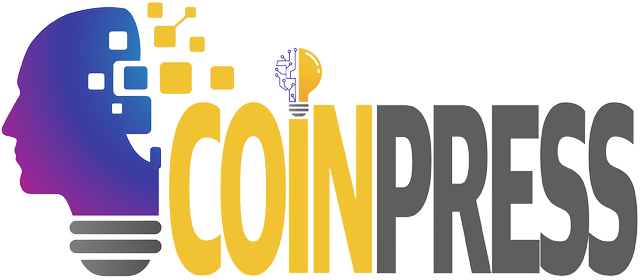
-
 Creator's death no bar to new 'Dragon Ball' products
Creator's death no bar to new 'Dragon Ball' products
-
Chinese stocks tumble on lack of fresh stimulus

-
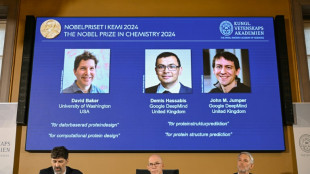 Trio wins chemistry Nobel for protein design, prediction
Trio wins chemistry Nobel for protein design, prediction
-
Braving war: Lebanon's 'badass' airline defies odds

-
 US weighs Google breakup in landmark trial
US weighs Google breakup in landmark trial
-
Chinese stocks tumble on stimulus upset, Asia tracks Wall St higher

-
 7-Eleven owner confirms new takeover offer from Couche-Tard
7-Eleven owner confirms new takeover offer from Couche-Tard
-
A US climate scientist sees hurricane Helene's devastation firsthand

-
 Can carbon credits help close coal plants?
Can carbon credits help close coal plants?
-
Boeing suspends negotiations with striking workers

-
 7-Eleven owner's shares spike on report of new buyout offer
7-Eleven owner's shares spike on report of new buyout offer
-
Your 'local everything': what 7-Eleven buyout battle means for Japan

-
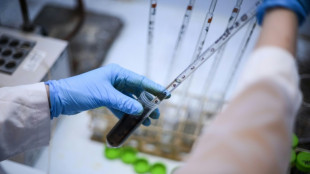 AI-aided research, new materials eyed for Nobel Chemistry Prize
AI-aided research, new materials eyed for Nobel Chemistry Prize
-
The US economy is solid: Why are voters gloomy?

-
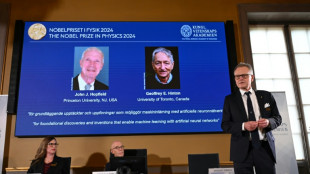 Scientists sound AI alarm after winning physics Nobel
Scientists sound AI alarm after winning physics Nobel
-
Nobel-winning physicist 'unnerved' by AI technology he helped create
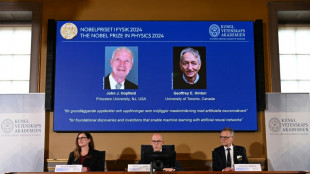
-
 Trump secretly sent Covid tests to Putin: Bob Woodward book
Trump secretly sent Covid tests to Putin: Bob Woodward book
-
Neural networks, machine learning? Nobel-winning AI science explained
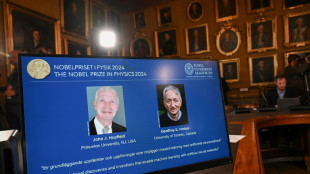
-
 Boeing delivers 27 MAX jets in September despite strike
Boeing delivers 27 MAX jets in September despite strike
-
Stock markets diverge as Hong Kong sinks, oil prices fall

-
 US trade gap narrowest in five months as imports slip
US trade gap narrowest in five months as imports slip
-
Stay and 'you are going to die': Florida braces for next hurricane

-
 Geoffrey Hinton, soft-spoken godfather of AI
Geoffrey Hinton, soft-spoken godfather of AI
-
Duo wins Physics Nobel for 'foundational' AI breakthroughs
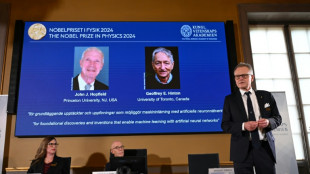
-
 German 'Maddie' suspect could be free in 2025 after cleared of separate sex crimes
German 'Maddie' suspect could be free in 2025 after cleared of separate sex crimes
-
China slaps provisional tariffs on EU brandy imports

-
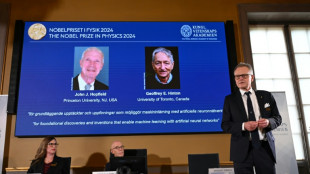 Duo wins Physics Nobel for key breakthroughs in AI
Duo wins Physics Nobel for key breakthroughs in AI
-
German 'Maddie' suspect could be free soon after cleared of separate sex crimes

-
 China says to take anti-dumping measures against EU brandy imports
China says to take anti-dumping measures against EU brandy imports
-
China stocks rally fizzles on stimulus worries amid Asia retreat

-
 China stocks rally peters out on stimulus worries amid Asia retreat
China stocks rally peters out on stimulus worries amid Asia retreat
-
Taiwan's Foxconn says building world's largest 'superchip' plant

-
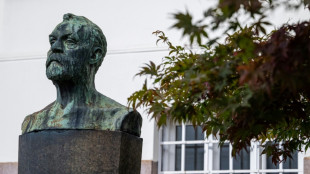 Nobel literature jury may go for non-Western writer
Nobel literature jury may go for non-Western writer
-
From Bolivia to Indonesia, deforestation continues apace

-
 China holds off on fresh stimulus but 'confident' will hit growth target
China holds off on fresh stimulus but 'confident' will hit growth target
-
German suspect in 'Maddie' case faces verdict in sex crimes trial

-
 Top economic official 'confident' China will hit 2024 growth target
Top economic official 'confident' China will hit 2024 growth target
-
COP29 fight looms over climate funds for developing world

-
 Shanghai stocks soar to extend stimulus rally amid Asia-wide drop
Shanghai stocks soar to extend stimulus rally amid Asia-wide drop
-
Will Tesla's robotaxi reveal live up to hype?

-
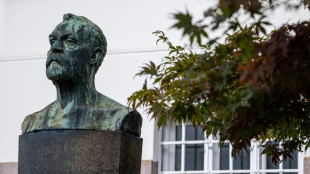 'Invisibility' and quantum computing tipped for physics Nobel
'Invisibility' and quantum computing tipped for physics Nobel
-
Oil prices extend gains on Mideast tensions, Wall Street falls

-
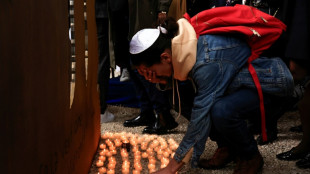 'Dark day': Victims mourned around the globe on Oct. 7 anniversary
'Dark day': Victims mourned around the globe on Oct. 7 anniversary
-
Mission to probe smashed asteroid launches despite hurricane
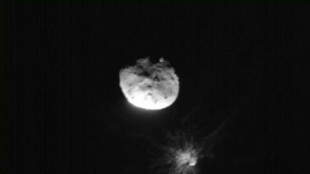
-
 Oil prices extend gains on Mideast tensions, Wall Street slips
Oil prices extend gains on Mideast tensions, Wall Street slips
-
Europe's asteroid mission Hera launches despite hurricane

-
 Oil prices extend gains on Mideast tensions, Wall Street retreats
Oil prices extend gains on Mideast tensions, Wall Street retreats
-
What is microRNA? Nobel-winning discovery explained
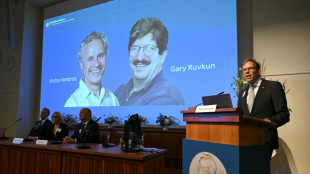
-
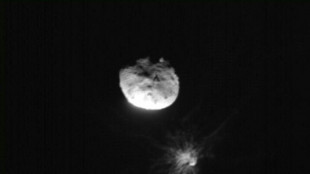 Weather may delay launch of mission to study deflected asteroid
Weather may delay launch of mission to study deflected asteroid
-
China to flesh out economic stimulus plans after bumper rally


Five things to know about the Czech Republic
The Czech Republic, which holds the first round of its presidential election on Friday and Saturday, is an ex-communist country that has been a part of the European Union since 2004.
A factfile on the country:
- EU, NATO member -
The Czech Republic became a NATO member in 1999 before joining the EU. The country is also a part of the Schengen free travel area, but it has resisted adopting the euro, favouring its own koruna currency.
- Communist echoes -
The outgoing head of state is Milos Zeman, a former communist who had promoted close ties with Russia until it invaded Ukraine last year.
Right-wing Prime Minister Petr Fiala, a former professor of political sciences, presides over a government comprising five parties and backed by a parliamentary majority of 108 of the country's 200 lawmakers.
Fiala took office after a general election in 2021 in which his three-party Together coalition narrowly beat the centrist populist ANO movement of then-premier Andrej Babis.
Babis, a former communist, is one of eight candidates running in the presidential vote.
- Independence in 1993 -
In 1918, Western Slavs shook off Austro-Hungarian rule, establishing Czechoslovakia, a new country comprising Czechs and Slovaks. But by 1938, Nazi Germany annexed its borderland regions. A year later it took over the Czech territories of Bohemia and Moravia, and turned Slovakia into a satellite state.
Czechoslovakia regained its autonomy in 1945, but three years later was brought into the orbit of the Soviet Union -- and remained there until a non-violent 1989 transition of power.
Czechoslovakia split into two states, the Czech Republic and Slovakia, in 1993 and dissident playwright Vaclav Havel became the first Czech president.
- Prague, architectural gem -
The country of 10.5 million people has no access to the sea and borders Poland, Slovakia, Austria and Germany.
Its capital Prague is a tourist magnet, boasting a picturesque historic centre that has enjoyed UNESCO World Heritage status since 1992. In the shadow of the Prague Castle, the old town split by the Vltava River is rich in architectural gems, Renaissance and Baroque palaces, Gothic cathedrals and art deco buildings illustrating its thousand-year history.
- Aid to Ukraine -
In February 2022, Zeman took a U-turn on Russia after nursing friendly ties with its President Vladimir Putin for years.
When Russia attacked Ukraine, he labelled Putin "a madman (who) must be isolated". He also admitted he had been wrong about the Russian leader.
Fiala's government has vowed unflinching support to Ukraine. It has provided military aid worth $200 million to the war-ravaged country and received more than 400,000 refugees.
The government's critics complain that Fiala's team is paying more attention to Ukraine than to Czechs battling record inflation and soaring energy prices, which are largely due to the invasion.
Analysts widely predict a recession for the economy heavily dependent on car production and exports. The Czech Republic's industry relies on three large car plants -- Skoda, Hyundai and Toyota.
C.Smith--CPN
